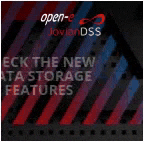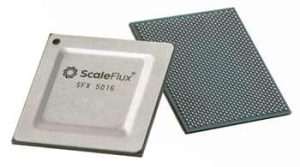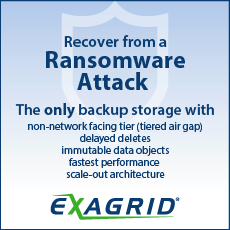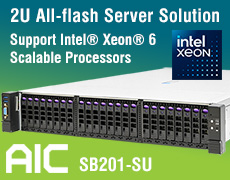ScaleFlux SSDs Sustainability and Energy Efficiency in New AI Culture
SSDs and Arm-based solutions enable AI infrastructures to maintain high performance while remaining energy-efficient.
This is a Press Release edited by StorageNewsletter.com on May 17, 2024 at 2:01 pmThe apocryphal tale of Benjamin Franklin venturing out into a storm with kite and key in hand set the stage for the 21st century’s voracious appetite for electricity.
AI has proved to be a glutton for energy consumption. The amount of computing power necessary for AI/ML is doubling every 6 months. (1) Data center behemoths like AWS, Microsoft, and Google are looking to reduce their carbon footprint, increase efficiency, and reduce energy costs. To comply with this trend, the IT infrastructure is evolving towards a more distributed compute architecture and a broader variety of processor cores and types (such as Arm-based CPUs and SoC processors).
JB Baker, VP, products, ScaleFlux, Inc. says: “Large-scale AI workloads rely heavily on memory and networking, putting much of the current focus on alleviating bottlenecks in these areas. However, with the petabyte and exabyte scale of the datasets used in AI, power and efficiencies of the underlying storage infrastructure are quietly a major challenge. Improving the pipeline between storage, memory, and GPUs with solutions like SSDs enhanced with computational storage capabilities is critical in enabling companies to achieve their efficiency and energy sustainability goals.”
A data center is a tangible space dedicated to housing IT infrastructure. Its purpose is to construct, operate, and provide applications and services while also serving as the storage and management hub for the associated data. Once privately owned for the exclusive use of one company, data centers have evolved into remote facilities managed by cloud service providers that house a virtualized IT infrastructure shared among multiple companies and customers. (2) Of the 10,978 data center locations worldwide, 5,388 are in USA. (3) Newmark’s new U.S. Data Center Market report says that the U.S. data center footprint will more than double from 17 gigawatts in 2022 to 35 gigawatts in 2030. (4)
Troubling statistical data strongly suggests that data centers and data transmission networks are infringing on global efforts to improve the sustainability of energy resources and minimize harm to the environment. The Department of Energy reports that data centers consume up to 50x as much energy per floor space as conventional commercial office buildings. (5)
In January, the International Energy Agency (IEA) released its forecast for global energy consumption for the next 2 years. Notably, the report included projections for electricity usage linked to data centers, cryptocurrency, and AI for the first time. According to the IEA, these sectors combined accounted for nearly 2% of global energy demand in 2022. The agency predicts that by 2026, demand for these services could double, reaching a level approximately equivalent to the whole of Japan’s electricity consumption. (6)
AI models are trained using copious data, and the more complex and popular an AI model is, the more requests it receives and the more energy it uses. Training can take from just a few minutes to months, based on the amount of data and the AI’s level of sophistication. GPUs, the electronic circuits or computer chips that perform the computational tasks used in ML, run 24 hours a day, devouring vast amounts of energy while the AI model deduces a user query, processes it, thinks about it, and provides the answer. (7)
This perfect storm of data-hungry tech and its unquenchable need for more energy to power increasingly sophisticated data processing needs cannot be calmed without changes to the IT architecture.
A SSD is a mass storage device with no moving parts, unlike a spinning HDD. It stores data on integrated circuits, utilizing flash memory for faster data access compared to traditional HDDs. SSDs boast considerably faster accessing speeds than HDDs, resulting in accelerated file transfers, reduced power consumption, increased durability against physical damage, and quieter operation. They offer instant system boot-up, multitasking, better system cooling, and flexible storage options. (8)
Data center operators prioritize power efficiency, component dependability, RAS (reliability, availability, and serviceability), and storage and performance density. SSDs have transformed enterprise data centers with high-speed performance and agility, critical in split-second decision-making. SSDs offer rapid data access, energy savings, and compact size, optimizing space and scalability. (9)
In computational storage solutions like SSDs, aspects of data processing become localized on the drive where the data is stored, providing additional processing capability to the server. Rather than transmitting data over long distances, localized data processing minimizes latency, energy consumption, and bandwidth utilization. And since data stays on the drive, computational storage solutions enhance privacy and security. (10)
Arm-based computing uses an advanced RISC microprocessor architecture design that features lower power consumption, better efficiency, lower cost, and higher performance than traditional x86 CISC architectures. Arm server processors offer extensive scalability and can manage workloads from lightweight web servers to high-performance computing tasks. Their lower power consumption and higher performance make them a popular choice for AI and ML algorithms in data centers. (11)
ScaleFlux is a computational storage provider, helping businesses get more from their data infrastructure and budget at scale. Their transformational SSDs embed intelligent computational storage technology to perform storage computing directly in the data path, optimizing the data pipeline for enhanced scalability. The company‘s smarter SSD transparently compresses and accelerates data to double performance and efficiency. It supports its customers in reaching their sustainability goals, enabling more storage/GB of flash, reducing the requirement for extra components, and decreasing environmental waste.
The company‘s upcoming incorporation of the Arm Cortex-R82 processor into its next-gen enterprise SSD controllers is poised to amplify data processing performance and efficiency across data centers and AI infrastructures WW. This technology offers data transfer speeds and energy efficiency to meet the growing demands for higher bandwidth and energy-efficient storage solutions.
Baker affirms: “ScaleFlux’s innovative and reliable technologies facilitate the seamless integration of AI acceleration into existing data infrastructures. Its market-leading computational storage solutions balance technological ambition and environmental stewardship. ScaleFlux helps businesses optimize their IT infrastructure with an efficient, data-centric, and environmentally responsible architecture.”
(1) L, Jennifer. The Carbon Countdown: AI and Its 10 Billion Rise in Power Use. Carbon Credits, February 28, 2024
(2) What Is a Data Center ? IBM, Accessed April 22, 2024
(3) Minnix, John. 113 Data Center Stats You Should Know in 2024. Brightlio, April 11, 2024
(4) Rogers, Jack. U.S. Data Center Demand Will Double by 2030. GlobeSt, January 11, 2024
(5) Data Centers and Servers. Energy.Gov, Accessed April 26, 2024
(6) Calvert, Brian. AI Already Uses as Much Energy as a Small Country. It’s Only the Beginning. Vox, March 8, 2024
(7) Clark, Tim. SAP Brandvoice: Why Does Ai Consume so Much Energy? Forbes, Forbes Magazine, December 23, 2023
(8) Everything You Need to Know about Solid-State Drives (SSD). Arts Computing Office Newsletter, April 13 , 2020
(9) Solutions, Reliance. SSD in the Enterprise: How Solid State Drives Transform Data Centers. Medium, Medium, January 21, 2024
(10) Arm. What Is Computational Storage? Accessed April 22, 2024
(11) What Are ARM-Based Servers? Comparison with X86, Benefits and Drawbacks 2023. Accessed April 22, 2024
















 Subscribe to our free daily newsletter
Subscribe to our free daily newsletter

